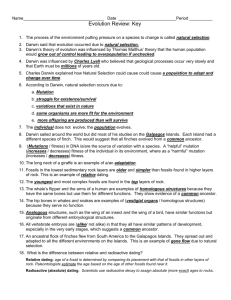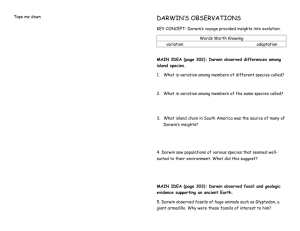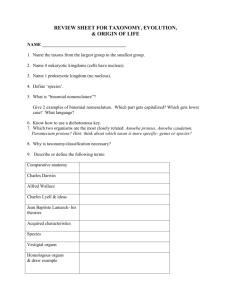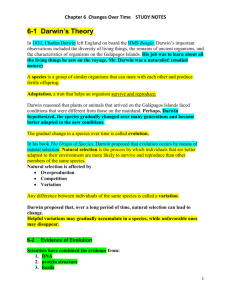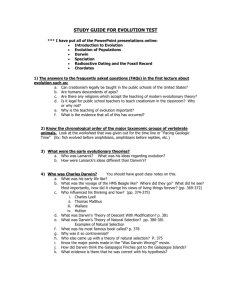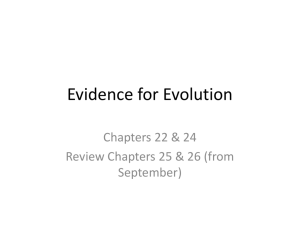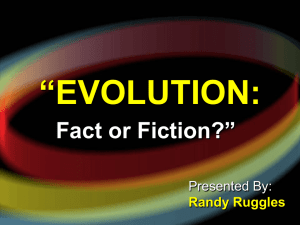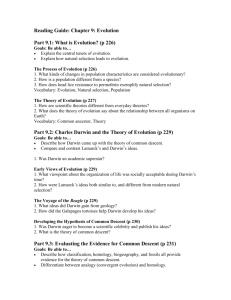Evolution Big Ideas: Information and heredity, Cellular Basis of life
advertisement
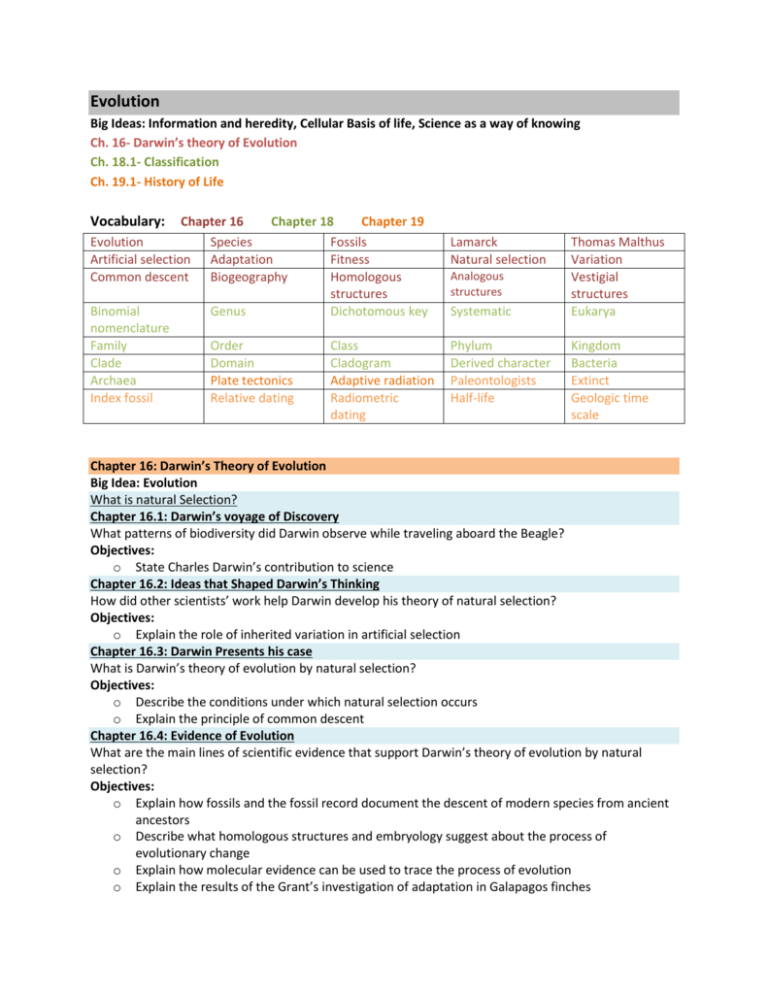
Evolution Big Ideas: Information and heredity, Cellular Basis of life, Science as a way of knowing Ch. 16- Darwin’s theory of Evolution Ch. 18.1- Classification Ch. 19.1- History of Life Vocabulary: Chapter 16 Chapter 18 Chapter 19 Evolution Species Fossils Artificial selection Adaptation Fitness Common descent Biogeography Homologous structures Binomial Genus Dichotomous key nomenclature Family Order Class Clade Domain Cladogram Archaea Plate tectonics Adaptive radiation Index fossil Relative dating Radiometric dating Lamarck Natural selection Analogous structures Systematic Phylum Derived character Paleontologists Half-life Thomas Malthus Variation Vestigial structures Eukarya Kingdom Bacteria Extinct Geologic time scale Chapter 16: Darwin’s Theory of Evolution Big Idea: Evolution What is natural Selection? Chapter 16.1: Darwin’s voyage of Discovery What patterns of biodiversity did Darwin observe while traveling aboard the Beagle? Objectives: o State Charles Darwin’s contribution to science Chapter 16.2: Ideas that Shaped Darwin’s Thinking How did other scientists’ work help Darwin develop his theory of natural selection? Objectives: o Explain the role of inherited variation in artificial selection Chapter 16.3: Darwin Presents his case What is Darwin’s theory of evolution by natural selection? Objectives: o Describe the conditions under which natural selection occurs o Explain the principle of common descent Chapter 16.4: Evidence of Evolution What are the main lines of scientific evidence that support Darwin’s theory of evolution by natural selection? Objectives: o Explain how fossils and the fossil record document the descent of modern species from ancient ancestors o Describe what homologous structures and embryology suggest about the process of evolutionary change o Explain how molecular evidence can be used to trace the process of evolution o Explain the results of the Grant’s investigation of adaptation in Galapagos finches Chapter 18: Classification Big Idea: Unity and the Diversity of Life What is the goal of biologists who classify living things? Chapter 18.1 Finding Order in Diversity Why do scientists classify organisms Objectives: o Describe the goals of binomial nomenclature and systematic o Identify the taxa in the classification system devised by Linnaeus o Explain the use of DNA sequences in classification Chapter 19: History of Life Big Idea: Evolution How do fossils help biologists understand the history of life on Earth? Chapter 19.1 The Fossil Record How Objectives: o Explain what information fossils can reveal about ancient life. o Differentiate between relative dating and radiometric dating




